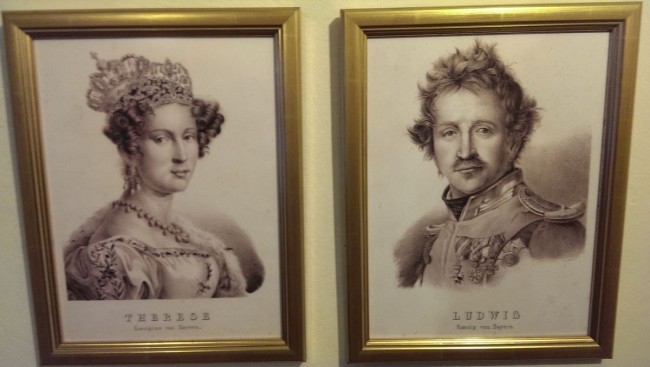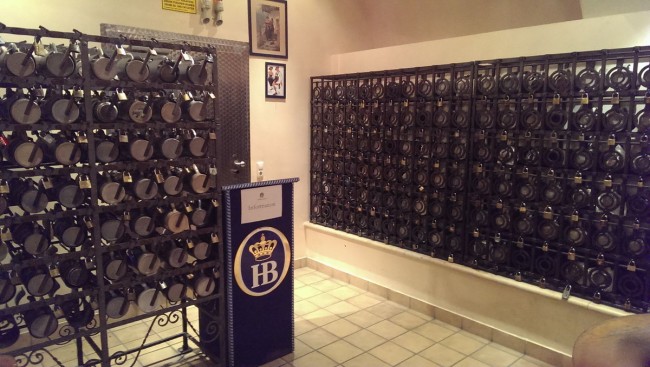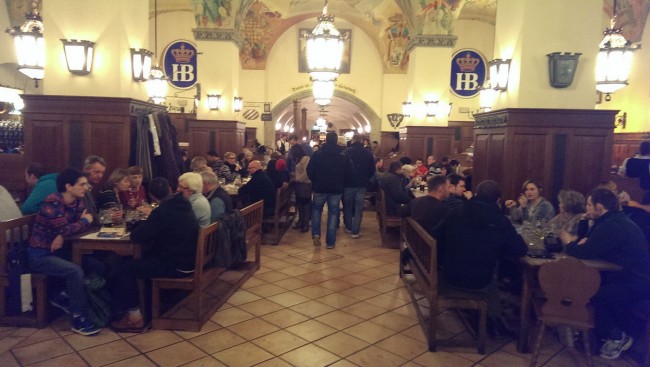One of the best kept secrets in the English-speaking world is that the German city of Munich has a museum dedicated to beer and the Oktoberfest. Who knew? Why a city that hosts the world’s largest annual festival dedicated to everything beer (and Bavarian) would harbour such an institution is incomprehensible, or at least it would seem so due to the small number of foreign visitors to the museum. Or maybe the locals just want to keep it to themselves while the tourists go to the Hofbrauhaus.
Flying into Munich from Toronto we check into our accommodation at the Rivoli Hotel, a newly renovated boutique hotel with a chic interior. It is situated just outside the city’s downtown core, which makes it more affordable. The Rivoli Hotel is only a five minute walk to the Haras subway station on the U6 line and only 10 minutes to Munich’s historic district at Marienplatz.
From Marienplatz, the Bier & Oktoberfest Museum is only a short walk and is located by the Isartor Gate, a surviving medieval entrance to Munich. Built in 1340 the museum is situated in the city’s oldest house. Originally built as a twelve unit apartment building it survived a fire, that burned 75% of Munich, as well as Allied aerial bombings during the Second World War. If, for no other reason, the building is worth viewing as a survivor of medieval times.
Apparently the building was inhabited by a single man until the 1980s in its original state, in other words, no electricity or indoor plumbing. The building was eventually bought by a local businessman, Ferdinand Schmid, who believed Munich should have a museum dedicated to the Oktoberfest and beer since both have been historically vital to the city’s economy. He also believed that the oldest house in Munich would be the most appropriate venue for this museum. After undergoing a massive renovation, the museum was opened in 2005.
The Bier & Oktoberfest Museum is divided into four distinct sections. One depicts life in the building as a tenant during the 14th century, another 5,000 year history of beer, the third the 200 year history of Oktoberfest and the final section is a traditional Bavarian beer cellar. Additionally there is a gallery set aside for special exhibitions.

The marriage of Bavaria’s Crown Prince Ludwig to Princess Therese on October 12, 1810 marked the first Oktoberfest. Horse racing was a major part of the original Oktoberfest and subsequent Oktoberfests were held with races being the main attraction, although beer was always a part of the Fest. The 17-day-long Oktoberfest was moved forward into September to ensure better weather.
We meet with Lukas Bulka, the museum’s manager. A tall, broad shouldered man, he speaks impeccable English, as many younger urban Germans do. We start our tour in the basement by the museum’s Bavarian beer cellar. While there the cellar soon fills with frolicking clients, partaking, apparently, in a corporate function.
“This room is booked frequently by corporate clients. Munich has many corporate headquarters such as BMW, Siemens, Allianz,” said Lukas. ”They keep us busy year round, this place is very popular with their employees. So while we have many German customers and business is good, we would like to attract more tourists and share the history of beer and Bavarian traditions. We are not trying to keep this place a secret.”

While the Hofbrauhaus receives large numbers of tourists locals also drink here. If you drink frequently at the Hofbrauhaus you can have your beer stein kept here.
Brewing has been a on-going business concern in Munich since the city’s humble origins so much so that the first beer purity laws were introduced here in 1487 in an attempt to keep a consistent quality to the golden amber. The 1487 law only held sway in Munich. It wasn’t until 1516 that they are adapted throughout the then Kingdom of Bavaria. The law only takes effect throughout all of Germany during the 1920’s but what do those northern wine drinking, schnapps distilling Germans really know about beer.

Keeping with tradition current beer servers in Munich’s major beer halls still wear traditional Bavarian dress of two centuries ago.
“One of the things that make Munich brewed beer unique is that the breweries own their own wells which are as deep as 250 metres,” stated Lukas. “The water drawn from these wells is between 10,000 – 12,000 years old. Having been filtered by the different strata of rocks, the water is soft which makes for a superior beer.”
Brewing eventually became the largest industry in Munich by the 1860s. Lowenbrau had 4,000 employees. A century ago Munich had 100 breweries now it has six large breweries with Augustiner (established in 1328) being the only independent left. The others are owned by larger corporations. But history marches on and Munich is now home to a widely diversified economy consisting of the auto industry, electronics, finance and research and development (and arguably one of the best soccer clubs in the world, FC Bayern Munchen.)
A great way to see the museum is to book a private tour, as we did. Tours are offered in German and English and requests can be made for other languages. Before leaving the museum you should take part in a beer tasting. Beer can be as complex as wine, and in some cases more so. As with wines, beers should be pared with the food being eaten. All of this you’ll learn in a living museum. Prost.
Written by Joseph and Diane Frey
Photo Credits
All photos by Jonathan Frey – All Rights Reserved



Please Share Your Thoughts - Leave A Comment!